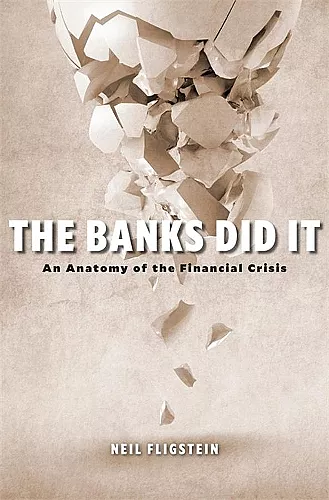The Banks Did It
An Anatomy of the Financial Crisis
Format:Hardback
Publisher:Harvard University Press
Published:25th Jun '21
Should be back in stock very soon

A comprehensive account of the rise and fall of the mortgage-securitization industry, which explains the complex roots of the 2008 financial crisis.
More than a decade after the 2008 financial crisis plunged the world economy into recession, we still lack an adequate explanation for why it happened. Existing accounts identify a number of culprits—financial instruments, traders, regulators, capital flows—yet fail to grasp how the various puzzle pieces came together. The key, Neil Fligstein argues, is the convergence of major US banks on an identical business model: extracting money from the securitization of mortgages. But how, and why, did this convergence come about?
The Banks Did It carefully takes the reader through the development of a banking industry dependent on mortgage securitization. Fligstein documents how banks, with help from the government, created the market for mortgage securities. The largest banks—Countrywide Financial, Bear Stearns, Citibank, and Washington Mutual—soon came to participate in every aspect of this market. Each firm originated mortgages, issued mortgage-backed securities, sold those securities, and, in many cases, acted as their own best customers by purchasing the same securities. Entirely reliant on the throughput of mortgages, these firms were unable to alter course even when it became clear that the market had turned on them in the mid-2000s.
With the structural features of the banking industry in view, the rest of the story falls into place. Fligstein explains how the crisis was produced, where it spread, why regulators missed the warning signs, and how banks’ dependence on mortgage securitization resulted in predatory lending and securities fraud. An illuminating account of the transformation of the American financial system, The Banks Did It offers important lessons for anyone with a stake in avoiding the next crisis.
Neil Fligstein’s new book reads like a financial crime novel, but with a twist. Instead of asking ‘who done it?’ we are told up front that the banks did it, and the real mystery concerns why they did it, when they did it, and how it produced a global crisis in 2008. Why did US banks become so deeply involved in industrial-scale origination and securitization of home mortgages? Who would loan money to borrowers that almost certainly couldn’t repay? Why didn’t banks change course when it became clear that the bubble was about to burst? Fligstein weaves together a huge amount of evidence as he identifies key turning points, refutes simplistic explanations, and presents a coherent and sophisticated account of an extraordinarily consequential sequence of events. -- Bruce G. Carruthers, Northwestern University
Fligstein is the most influential economic sociologist at work today. Hands down. He is also one of the most successful sociological discipline-spanners, with wide influence outside of sociology. This eminently readable book will be of great interest beyond sociology, to historians, political scientists, and economists. The Banks Did It is erudite, carefully researched, and powerfully argued. It does not disappoint. -- Frank Dobbin, Harvard University
Well-structured, well-evidenced, attractively written, and based on over a decade of research, The Banks Did It is a brilliant work by a scholar who has reshaped how we should think about markets. -- Donald MacKenzie, University of Edinburgh
In this incisive and exceptionally clear book, Neil Fligstein describes how government action unwittingly helped shift the business model of American banks from long-term customer relations towards fee-based activities anchored in mortgage origination and securitization. By the mid-2000s, every part of US financial organizations was oriented to maintaining this pipeline, at the cost of considerable risk-taking and even fraud. By offering a long-term view of the lead-up to the 2008 financial crisis, Fligstein shows exactly how the banks, really, ‘did it’—and also lays blame at the feet of monetary experts and authorities, who never saw it coming. -- Marion Fourcade, University of California, Berkeley
A rich, deep, and comprehensive account of the financial crisis, arguing that the world the banks constructed and how they profited from it are at the core of what happened…Represents an important advance in our understanding of the financial crisis of 2007–2008. Readers, be they organizational theorists or anyone who has a stake in preventing the next financial crisis, will walk away better informed of how the crisis was produced, why it spread so fast and so deeply, and how regulators missed what was happening. -- Lori Yue * Administrative Sciences Quarterly *
- Runner-up for George R. Terry Book Award 2022 (United States)
ISBN: 9780674249356
Dimensions: unknown
Weight: unknown
336 pages